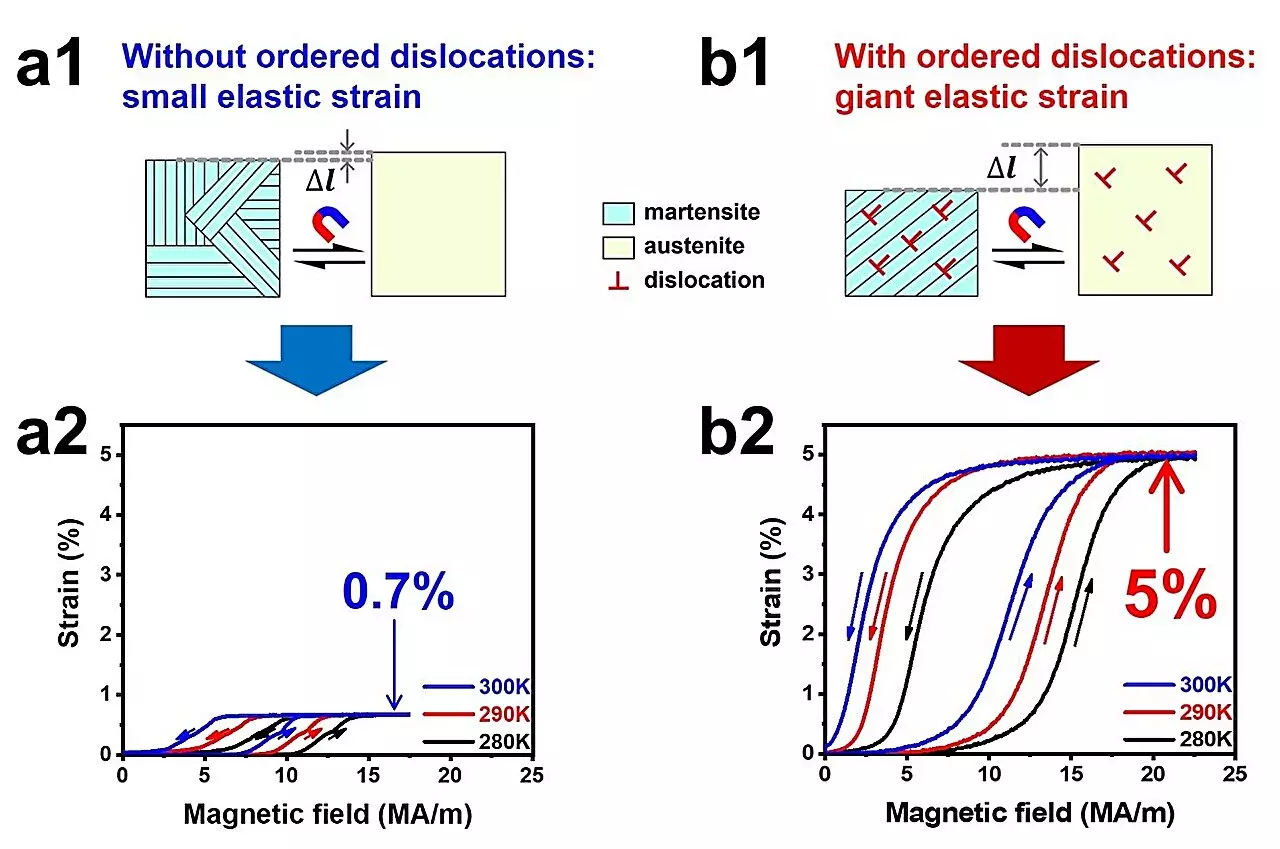In a recent study published in Advanced Science, a research group successfully developed a Ni34Co8Cu8Mn36Ga14 single crystal with a remarkable 5% magneto-superelasticity. This breakthrough was achieved by introducing arrays of ordered dislocations to create preferentially oriented martensitic variants during the magnetically induced reverse martensitic transformation.
The Research Process
Led by Prof. Jiang Chengbao and Prof. Wang Jingmin from Beihang University, the researchers conducted stress-constrained transition cycling (SCTC) training on the single crystal by applying compressive stress. This training method facilitated the introduction of specific ordered dislocations with a particular orientation, which significantly influenced the formation of targeted martensitic variants during the reversible transformation induced by a magnetic field.
Through phase field simulations, the researchers confirmed that the internal stress generated by these organized dislocations played a critical role in shaping the preferred martensitic variants. By combining the reversible martensitic transformation with the preferential orientation of the martensitic variants, the single crystal achieved an outstanding magneto-superelasticity of 5%.
Application in Device Design
Furthermore, the researchers designed a device utilizing a pulsed magnetic field with the developed single crystal. With a pulse width of 10 ms, the device was able to achieve a large stroke at room temperature, thanks to the giant magneto-superelasticity exhibited by the crystal. In practical applications, the device demonstrated a rapid response to an 8 ms pulse with a negligible delay of about 0.1 ms.
Prof.Wang emphasized the significance of defect engineering in accessing high-performance functional materials. The innovative approach of introducing ordered dislocations to control the formation of specific martensitic variants opens up new possibilities for the development of advanced materials with enhanced properties. The integration of magneto-superelasticity in material design not only enables contactless operation but also paves the way for the creation of efficient energy transducers and large-stroke actuators. This research sets a promising foundation for further exploration into the realm of functional materials engineering.


Leave a Reply